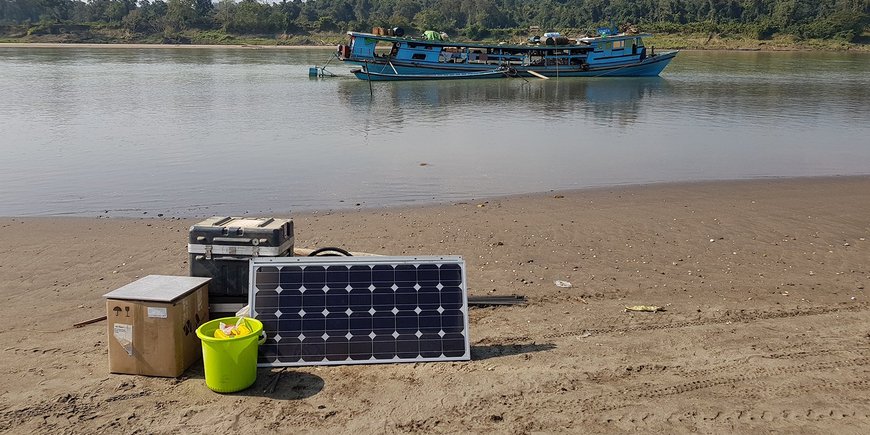“It’s gone from 0 to 100 in an amazingly short amount of time”, told Eric Sandvol, a seismol-ogist at the University of Missouri in Columbia, USA, the scientific journal Nature about the establishment of seismological monitoring in Myanmar. The GFZ is also participating with a joint project of several sections: Physics of Earthquakes and Volcanoes (Claus Milkereit), Seismology (Frederik Tilmann and Xiaohui Yuan), and Lithosphere Dynamics (Bernd Schurr).
The GFZ team monitors the subsurface in the North of Myanmar with a temporary seismic monitoring network in order to better understand the tectonic processes there, especially at the border region to India. Frederik Tilmann says: "This cooperation builds on the contacts established during the UNESCO training course organised by Claus Milkereit at the partner institute DMH, Department of Meteorology and Hydrology, and on the establishment of a GEOFON station in Nay Pyi Taw as part of the training course". “Many of our stations transmit their data via mobile radio in real time, so that they can also be used by DMH for routine earthquake monitoring in Myanmar. Furthermore, it is planned to set up a permanent network of instruments measuring strong earthquakes and a further perma-nent station in the GEOFON network in order to provide more reliable earthquake infor-mation in the region, especially for potential tsunami-generating earthquakes in the Indian Ocean".
Myanmar is located in a tectonically active region that is often hit by severe earthquakes. The journal Nature published an extensive article to this topic in the online news section.(jz)








![[Translate to English:] Torsten Sachs in front of a climate station on a field](/fileadmin/_processed_/3/9/csm__TorstenSachs_bearbeitet_GS_4a1365ef84.jpeg)

![[Translate to English:] left image flood at the Ahrtal: image from above, several houses are flooded; left image:: Heidi Kreibich;](/fileadmin/_processed_/4/4/csm_Bild2_9af0130e9f.png)



![[Translate to English:] Start der Vega Rakete](/fileadmin/_processed_/6/4/csm_20231201-kachel_Vega-VV23-launch_ESA-CNES-Arianespace_706716b68c.jpeg)









![[Translate to English:] Poster exhibition at the Brandenburg Hydrogen Day at the GFZ, some participants in the foreground](/fileadmin/_processed_/6/5/csm_Erster_Brandenburgischer_Wasserstofftag_GFZ_402fcec95e.jpeg)
![[Translate to English:] Group picture of the participants](/fileadmin/_processed_/9/4/csm_20231108_CAWa-Workshop-Tashkent_Gruppenbild_99ea779d8a.jpeg)

![[Translate to English:] [Translate to English:] Hörsaal](/fileadmin/_processed_/e/6/csm_H%C3%B6rsal_e21ac645fb.jpeg)


![[Translate to English:] The Delegations in the Historic Library on the Telegrafenberg. In the back there are from left to right, the Dutch Ambassador for Germany, Ronald van Roeden, the Dutch Minister for Education, Culture and Science, Robbert Dijkgraaf and the scientific director of the GFZ, Susanne Buiter.](/fileadmin/_processed_/d/b/csm_Kachel-2_9eba4b4212.jpeg)

